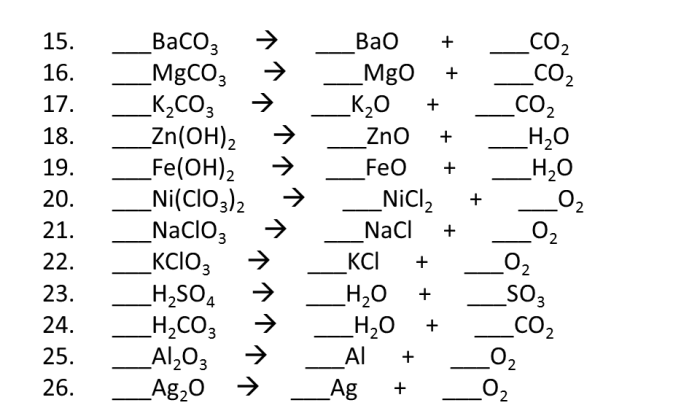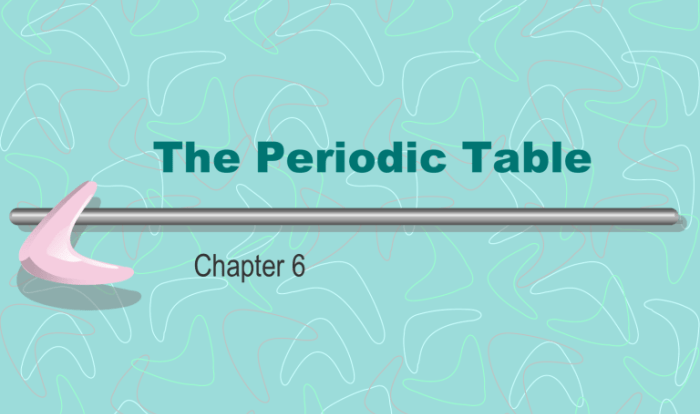Stoichiometry mole mole problems answers provide a comprehensive understanding of the quantitative relationships between reactants and products in chemical reactions. Understanding these relationships is crucial for predicting reaction outcomes, optimizing industrial processes, and minimizing waste.
This guide delves into the fundamental concepts of stoichiometry, including mole concept and its significance in stoichiometric calculations. It also demonstrates how to balance chemical equations, solve mole-to-mole problems, and determine limiting reactants.
Stoichiometry Concepts
Stoichiometry is the branch of chemistry that deals with the quantitative relationships between the reactants and products in a chemical reaction. It is essential for understanding the behavior of chemical systems and predicting the outcomes of reactions.
The mole concept is a fundamental concept in stoichiometry. A mole is defined as the amount of substance that contains as many elementary entities (atoms, molecules, ions, or electrons) as there are atoms in 0.012 kilograms of carbon-12. The mole concept provides a convenient way to express the amount of a substance in a reaction and to relate the amounts of different substances involved.
Relationship between Moles, Mass, and Number of Atoms/Molecules
The relationship between moles, mass, and number of atoms/molecules is given by the following equations:
- Number of moles = Mass (g) / Molar mass (g/mol)
- Number of atoms/molecules = Number of moles – Avogadro’s number (6.022 x 10 23mol -1)
Stoichiometric Calculations
Stoichiometric calculations involve using the mole concept to determine the quantitative relationships between reactants and products in a chemical reaction. To perform stoichiometric calculations, it is necessary to first balance the chemical equation to ensure that the number of atoms of each element is the same on both sides of the equation.
Step-by-Step Guide to Solving Mole-to-Mole Problems
- Balance the chemical equation.
- Convert the given mass or volume of one reactant to moles.
- Use the mole ratio from the balanced equation to convert moles of the first reactant to moles of the second reactant.
- Convert the moles of the second reactant to mass or volume, if necessary.
Table Comparing Different Methods for Mole-to-Mole Conversions
| Method | Formula |
|---|---|
| Mass to moles | Moles = Mass (g) / Molar mass (g/mol) |
| Moles to mass | Mass (g) = Moles
|
| Volume to moles | Moles = Volume (L)
|
| Moles to volume | Volume (L) = Moles / Molarity (mol/L) |
Limiting Reactant and Excess Reactant
In a chemical reaction, the limiting reactant is the reactant that is completely consumed, while the excess reactant is the reactant that is left over after the reaction is complete. The limiting reactant determines the maximum amount of product that can be formed in the reaction.
Procedure for Determining the Limiting Reactant
- Convert the given masses or volumes of all reactants to moles.
- Divide the moles of each reactant by its stoichiometric coefficient in the balanced chemical equation.
- The reactant with the smallest mole ratio is the limiting reactant.
Significance of Identifying the Limiting Reactant
Identifying the limiting reactant is important because it allows us to predict the maximum yield of the reaction and to determine the amount of excess reactant that will be left over.
Theoretical and Actual Yields: Stoichiometry Mole Mole Problems Answers
The theoretical yield of a reaction is the maximum amount of product that can be formed, assuming that the reaction goes to completion and that there are no losses. The actual yield is the amount of product that is actually obtained in the reaction.
Factors Affecting the Actual Yield
- Incomplete reactions
- Side reactions
- Losses during purification
Table Summarizing the Steps Involved in Calculating Theoretical and Actual Yields, Stoichiometry mole mole problems answers
| Yield | Formula |
|---|---|
| Theoretical yield | Theoretical yield = Moles of limiting reactant
|
| Actual yield | Actual yield = Mass of product obtained / Theoretical yield
|
Stoichiometry in Real-World Applications
Stoichiometry has a wide range of applications in various fields, including medicine, engineering, and environmental science.
Examples of Stoichiometry Applications
- Calculating the dosage of a medication based on the patient’s weight and the desired blood concentration
- Designing chemical processes to maximize product yield and minimize waste
- Predicting the environmental impact of chemical reactions, such as the release of greenhouse gases
Commonly Asked Questions
What is stoichiometry?
Stoichiometry is the branch of chemistry that deals with the quantitative relationships between reactants and products in chemical reactions.
What is the mole concept?
The mole is the SI unit of amount of substance. One mole of a substance contains exactly 6.022 × 10 23elementary entities (atoms, molecules, ions, or electrons).
How do I solve mole-to-mole problems?
To solve mole-to-mole problems, you need to use the mole concept and stoichiometry. First, balance the chemical equation to determine the mole ratios between the reactants and products. Then, use the mole ratios to convert the given amount of one substance to the desired amount of another substance.

